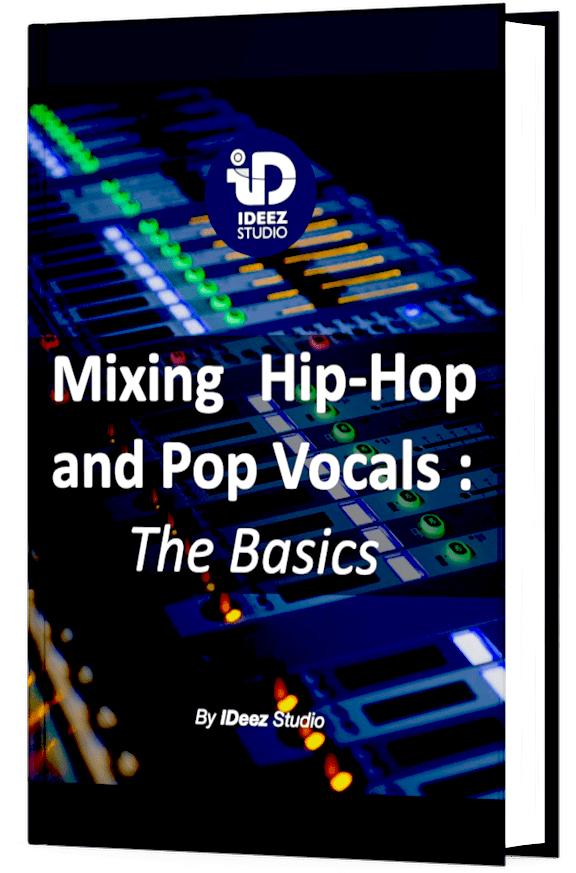Being able to mix backing vocals correctly will help your mix, your lead vocal and your music in general to sound better, more professional and more powerful. In order to achieve the best results, it is essential to proceed step by step. Even if it takes more time at the beginning, you will save dozens of hours of work later.

If you don’t know where to start with your backing vocals, follow this step-by-step guide. You’ll immediately see amazing results.
Here are the steps to follow to mix backing vocals:
- Align backing vocals on the lead vocal
- Adjust the volume
- Compress them
- Filter low frequencies
- De-ess them
- Add a reverb
- Use a doubler (optional)
Important : Before diving into the article, it is essential to know what backing vocals exactly are. If you have any doubts and/or you don’t know what backing vocals are, then I advise you to read this article: What Are Backing Vocals ?
1. Align backing vocals on the lead vocal
In vocal mixing, backing vocals that are not perfectly aligned with the lead vocal can quickly become unpleasant to listen to. Even a normal listener will be bothered by this kind of defect, the human ear is sensitive to it. In a quarter of a second, you can turn your mix from a pro mix to a completely amateur one, and vice versa.
Aligning backing vocals with lead vocals, to the nearest hundredth of a second, can become very tiring when you do it manually. But we have a solution for you! And that solution is called Vocalign.

This plugin is amazing. It allows you, in 3 clicks, to align one clip on another, according to the precision criteria you determine beforehand. Think about the number of hours you save, it’s huge! If you often mix vocals, I strongly recommend this plugin from SynchoArts.
2. Adjust the volume
Backing vocals are only a support for the lead vocal. It will be necessary to adjust their volume so that they do not overpower the lead vocal.
The best technique is to start from -∞, and, while playing the song with the lead vocal, to raise them slowly, until they become perceptible.
Never forget that mixing is all about feel. So they need to stay in the background, while being powerful enough to support the singer/rapper. This balance can be very subjective, it is up to you to feel it!
Need a professional sound engineer specializing in pop and hip-hop mixing ? Great! Take a look at our services and let’s blow up your career together!
Let’s start now!
3. Compress them
Volume jumps are always unpleasant, especially if the backing vocals are stereo, the human ear will notice it directly. This should be avoided at all costs.
This is why you should not forget the compression step, which will allow you to reduce the volume jumps that are too loud and to increase the weaker signals. This will ensure the presence of strong backings. With your compressor, I advice you to use pretty extreme values :

- Fast attack: +- 1 ms
- Medium release: +- 100 ms
- High ratio: +- 6 : 1
- Threshold level: It depends on the initial level of your backing vocals. Keep in mind that you only have to capture the loudest levels, not the entire signal. If the levels are set correctly, you should not go below -20 dB
A compressor is an essential tool in vocal mixing! You can learn more about this topic here: What Is An Audio Compressor ? How To Use It With Vocals ?
4. Filter low frequencies
Ah! This one is very interesting! This is a step that many people new to vocal mixing miss. However, this is an action that will greatly influence the quality of the final mix.
The principle is simple : filtering the bass and low-mid frequencies to give a “natural” distance to the backing vocals but also to avoid frequency conflicts with the main vocal.
Don’t be afraid to go too high with your low-cut filter. To give you an idea, at IDeez Studio, we never go below 350 Hz. The filter can sometimes go up to 800 Hz in certain situations. Here is a picture that will surely help you to get an idea :

In this case, you can see that we also turned down the mid range a little bit, to let the main vocal takes the lead.
5. De-ess them
A legendary engineer (can’t remember his name, sorry!) once said : “In music mixing, you never need more than one “s” “. It is totally true!
Sibilant sounds are not pleasant when they aren’t controlled in the right way. So I let you imagine the monstrous mess if you let this kind of sound on several vocals… That’s why, in vocal mixing, it’s important to filter out sibilant sounds, and quite hard.
Below are some typical values we use on our backing vocals :

By the way, do you want to learn more about De-Essers ? Then I can only suggest you to read this article: What Is A De-Esser ?
6. Add reverb
It is time now to put your backing vocals in a certain space! The goal is twofold :
- Choose a space that can blend them with the lead vocals
- Choose a reverb and a pre-delay that can give a little more depth to your backing vocals
Reverb – Vocals: These two things have to be played in harmony for a pro quality mix. Here an article that should help you: How To Use Reverb On Vocals – The Pro Guide
To be honest, this is the most crucial step of the process. The only way you could potentially kill your mix because of this step would be to add too much reverb and mask all the details.
If you don’t think you master all aspects of reverb, we advise you to keep things simple: very light hall and a medium pre-delay, and the result will already be correct!

Do you know how to blend reverb and delay with rap vocals ? Everything you need to know is here: How To Blend Reverb And Delay With Rap Vocals
7. Use a doubler (optional)
It is quite rare to work on mono backing vocals. Most of the time, they are meant to bring width to the main vocal, which is always in the center.
But in 2022, especially in the world of pop and hip-hop music, artists tend to record only one backing track. For the mixer, this can be very uncomfortable because there is no element to give width to the mix.
If this is the case with your singer, or if you are the artist yourself and just don’t want to double all your backing tracks, a doubler is the ultimate solution to add width.
In our opinion, the best doubler plugin is Doubler from Waves :

You can also use a chorus to create a fake stereo with a mono vocal track. Or even other techniques that I explain you in details right here: How To Create A Fake Stereo – 5 Ways To Proceed
Conclusion
In fact, mixing backing vocals is far from complicated. As you can see in this article, you just have to do little things in the right order: edit, compress, filter, deess and add space. As simple as that! Of course, every piece of music is different, so you should obviously not apply these recommendations to the letter, but adapt the basis to each mix. Last thing : Never forget to use your ears before your eyes, you’ll learn way faster!
If you have any questions about backing vocals or anything in the field of vocal mixing, contact me! I’m always happy to help!
Related Articles:
What Is An Audio Compressor ? How To Use It With Vocals ?
What Is A De-Esser ?
How To Use Reverb On Vocals – The Pro Guide
How To Blend Reverb And Delay With Rap Vocals
How To Create A Fake Stereo – 5 Ways To Proceed






